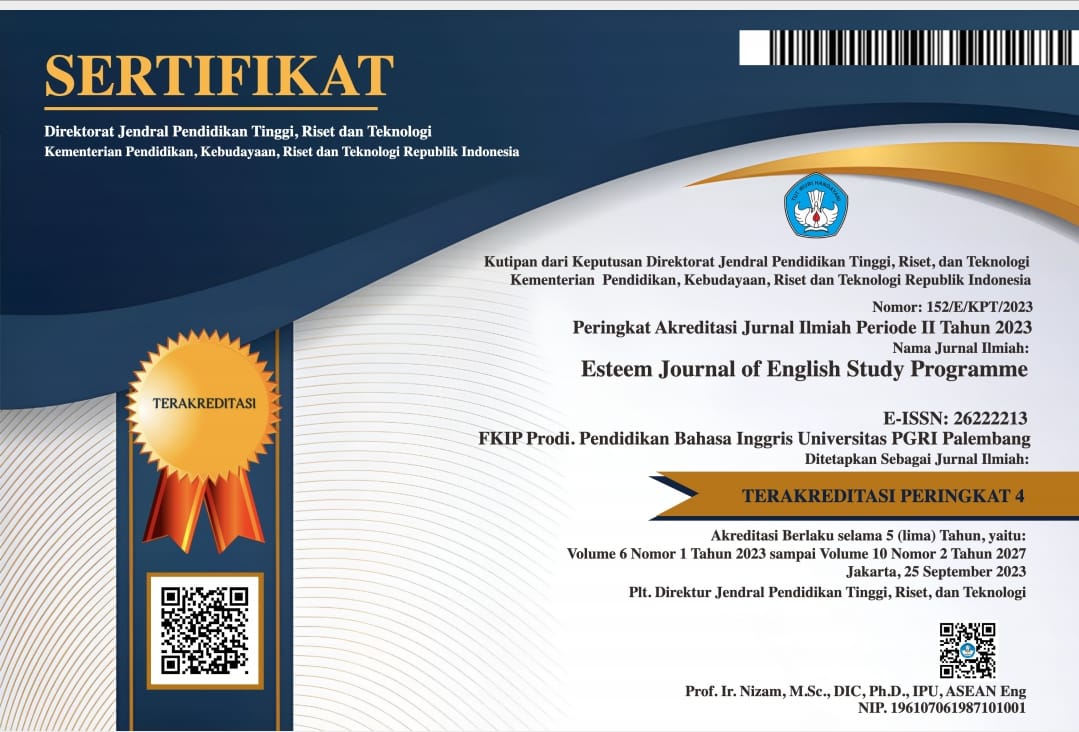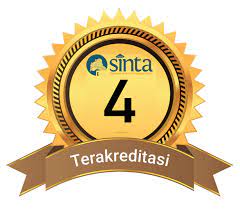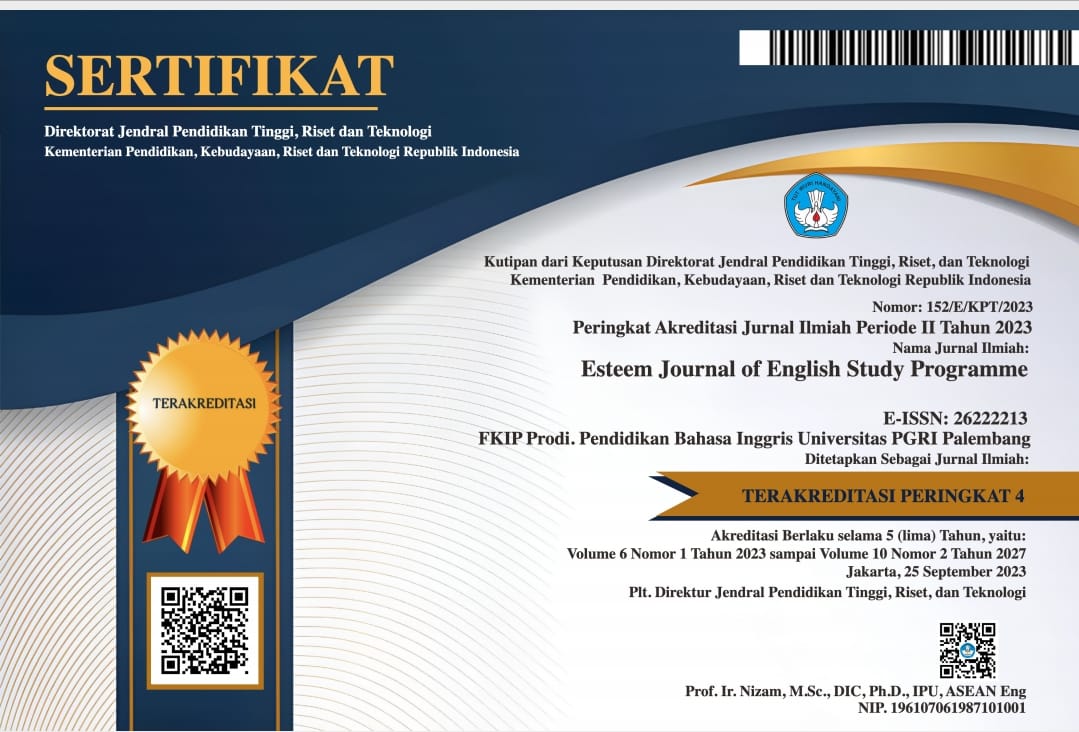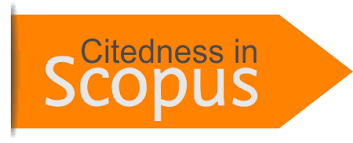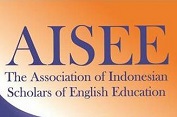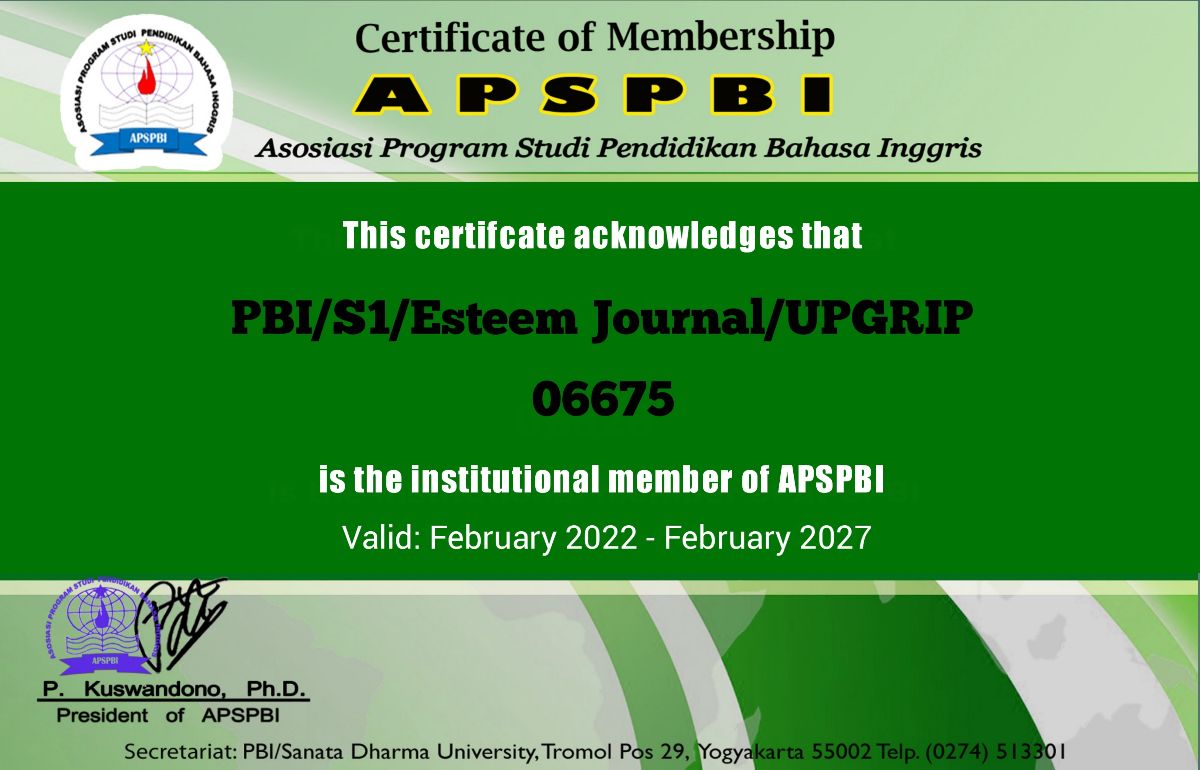DEVELOPMENT OF STUDENT WORKSHEETS REFERRING TO THE ADDIE MODEL
DOI:
https://doi.org/10.31851/esteem.v7i1.15809Keywords:
LKPD, Learning, ToolsAbstract
The development of Student Worksheets (LKPD) with the help of mentimeter on flat shape material for class V SD Negeri 1 Banyuasin 1, has the aim of being able to produce LKPD on flat shape material with the help of mentimeter which is valid, practical and has potential effects for class V students of SD Negeri 1 Banyuasin1. The type of research used by researchers in developing this LKPD is research and development, development refers to the ADDIE model which consists of Analysis, Design, Development, Implementation, and Evaluation. The research subjects were elementary VA class students at SD Negeri 1 Banyuasin 1. Data collection techniques used in the research were interviews, questionnaires, tests and documentation. based on the results of research by validator experts from three fields, namely media, material, language, the developed LKPD media obtained a validity level of 91.51%, from media experts who were categorized as "Very Valid", 90.25% from material experts who were categorized as "Very Valid" , 92.38% of language experts were categorized as "Very Valid" so that the Mentimeter-assisted LKPD was categorized as very valid with revisions. Then the practicality test of the one to one student questionnaire test obtained a result of 92.69% categorized as "very practical", then the small group trial obtained a result of 93.6% categorized as "very practical" so that both obtained a result of 93.1 % "very practical". And the final test of the potential effect test obtained a result of 97.09% categorized as "very effective".
References
Asmaranti, W. (2019). Design student worksheets (LKPD) for mathematics using a scientific approach based on character education. proceedings of the national seminar on ethnomatnesia, 639-646.
Aminullah, & Witilar, HM (2022). Development of Student Worksheets (LKPD) Based on Local Wisdom, Masserempulu Culture, Theme, Diversity of My Country in Elementary Schools. Journal of Elementary School Teacher Education, 26.
Ahmad, S., & YY (2020). Realistic Approach and Van Hiele Theory. Yogyakarta: CV BUDI UTAMA.
Andrini, VS, & Pratama, H. (2021). Implementation of Interactive Quiz with Mentimeter Software to Improve Learning Outcomes. Pulpit Science Journal, 287-294.
Hasibuan, AM, & Fatmawati, Pulungan, S., A, WY (2021). Increasing Students' Interest in Learning Mathematics Using the Snowball Throwing Method in Class VI Students of PAB 15 Klambir Lima Private Elementary School. ESJ (Elementary School Journal), 179-188.
Jaya, A., Hermansyah, & Rosmiyati, E. (2019). Redefining Project Based Learning In English Class. Esteem Journal of English Education Study Programme, 2(https://jurnal.univpgri-palembang.ac.id/index.php/esteem/issue/view/304)
Sugiyono. (2019). Quantitative, Qualitative, and R&D Research Methods. Bandung: Alphabeta.
Sugiyono. (2022). Research and Development Methods Research and Development. Bandung: Cv Alfabeta.
Triana, N. (2021). LKPD Based on Experiments on Student Learning Outcome Levels. In N. Triana. DKI Jakarta: Guepedia. matter. 15-18.
Veto Mortini, A., Jaya, A., & Akbar Zam, M. A. (2023). the Effect of Map Libs Technique on Students’ English Learning Achievement in Learning Personal Pronoun. Esteem Journal of English Education Study Programme, 6(2), 216–225. https://doi.org/10.31851/esteem.v6i2.12316
Wandini, RR, & Banurea, OK (2019). Mathematics Learning for MI/SD Teacher Candidates. Medan: CV. Widya Puspita.
Yudha, JR, & Sundari, S. (2021). Benefits of YouTube Learning Media for Student Competency Achievement. Journal of Telenursing (JOTING), 538.
Downloads
Published
Issue
Section
License
Copyright (c) 2024 Risa Kumala Sari, Marleni, Jayanti

This work is licensed under a Creative Commons Attribution-NonCommercial-ShareAlike 4.0 International License.
Copyright Notice
Authors who publish with this journal agree to the following terms:
In order to assure the highest standards for published articles, a peer review policy is applied. In pursue of the compliance with academic standards, all parties involved in the publishing process (the authors, the editors and the editorial board and the reviewers) agree to meet the responsibilities stated below in accordance to the Journal publication ethics and malpractice statement.
Duties of Authors:
- The author(s) warrant that the submitted article is an original work, which has not been previously published, and that they have obtained an agreement from any co-author(s) prior to the manuscript’s submission;
- The author(s) should not submit articles describing essentially the same research to more than one journal;
- The authors(s) make certain that the manuscript meets the terms of the Manuscript Submission Guideline regarding appropriate academic citation and that no copyright infringement occurs;
- The authors(s) should inform the editors about any conflict of interests and report any errors they subsequently, discover in their manuscript.
Duties of Editors and the Editorial Board:
- The editors, together with the editorial board, are responsible for deciding upon the publication or rejection of the submitted manuscripts based only on their originality, significance, and relevance to the domains of the journal;
- The editors evaluate the manuscripts compliance with academic criteria, the domains of the journal and the guidelines;
- The editors must at all times respect the confidentiality of any information pertaining to the submitted manuscripts;
- The editors assign the review of each manuscript to two reviewers chosen according to their domains of expertise. The editors must take into account any conflict of interest reported by the authors and the reviewers.
- The editors must ensure that the comments and recommendations of the reviewers are sent to the author(s) in due time and that the manuscripts are returned to the editors, who take the final decision to publish them or not.
Authors are permitted and encouraged to post online a pre-publication manuscript (but not the Publisher final formatted PDF version of the Work) in institutional repositories or on their Websites prior to and during the submission process, as it can lead to productive exchanges, as well as earlier and greater citation of published work (see The Effect of Open Access). Any such posting made before acceptance and publication of the Work shall be updated upon publication to include a reference to the Publisher-assigned DOI (Digital Object Identifier) and a link to the online abstract for the final published Work in the Journal.


















